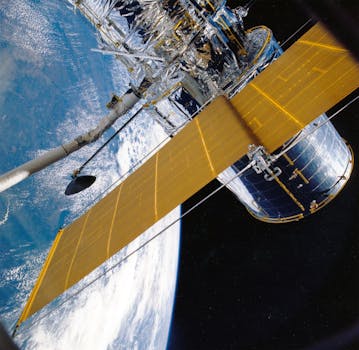Navigating the Skies: Insights into Recent Satellite Telecommunications Innovations
Recent satellite telecommunications innovations have revolutionized the way we communicate, providing faster and more reliable connections. This article explores the latest developments in satellite telecommunications, including advancements in satellite technology, new business models, and the impact on various industries.

Navigating the Skies: Insights into Recent Satellite Telecommunications Innovations
Satellite telecommunications have come a long way since the launch of the first commercial communications satellite, Intelsat 1, in 1965. Today, satellite telecommunications play a vital role in providing global connectivity, enabling communication between people, businesses, and governments across the world. Recent innovations in satellite telecommunications have further expanded the capabilities of satellite communications, providing faster, more reliable, and more affordable connections.
The advent of new satellite technologies, such as high-throughput satellites (HTS) and very high-throughput satellites (VHTS), has significantly improved the performance and capacity of satellite communications. These satellites use advanced technologies, such as spot beams and frequency reuse, to increase the amount of data that can be transmitted through a single satellite. This has enabled the widespread adoption of satellite broadband services, which are now used by millions of people around the world.
Advancements in Satellite Technology
In recent years, there have been significant advancements in satellite technology, driven by innovations in materials science, propulsion systems, and electronics. One of the most notable developments is the use of reusable rockets, which has significantly reduced the cost of launching satellites into orbit. This has made it possible for companies to launch constellations of satellites, which can provide global coverage and enable a wide range of applications, from broadband internet to Earth observation.
Another important development is the use of advanced propulsion systems, such as electric propulsion and Hall effect thrusters. These systems provide higher efficiency and longer mission durations, enabling satellites to operate for longer periods and reducing the need for frequent replacements. Additionally, advancements in materials science have enabled the development of lighter and more efficient satellite structures, which can be used to build larger and more capable satellites.
New Business Models and Applications
The recent innovations in satellite telecommunications have also enabled new business models and applications. One of the most significant developments is the rise of satellite-based internet of things (IoT) services, which enable the connection of devices and sensors in remote and hard-to-reach areas. This has enabled a wide range of applications, from smart agriculture to industrial automation, and has the potential to transform industries and improve people’s lives.
Another important development is the use of satellites for Earth observation and remote sensing. Satellites can be used to collect data on the environment, climate, and natural resources, which can be used to inform decision-making and policy development. This has significant implications for fields such as agriculture, forestry, and disaster response, and can help to address some of the world’s most pressing challenges.
Impact on Various Industries
The recent innovations in satellite telecommunications have had a significant impact on various industries, from telecommunications to finance and healthcare. In the telecommunications industry, satellite communications have enabled the provision of broadband services to remote and underserved areas, which has helped to bridge the digital divide and promote economic development.
In the finance industry, satellite communications have enabled the provision of financial services to remote and hard-to-reach areas, which has helped to promote financial inclusion and reduce poverty. In the healthcare industry, satellite communications have enabled the provision of telemedicine services, which has helped to improve access to healthcare and reduce mortality rates.

